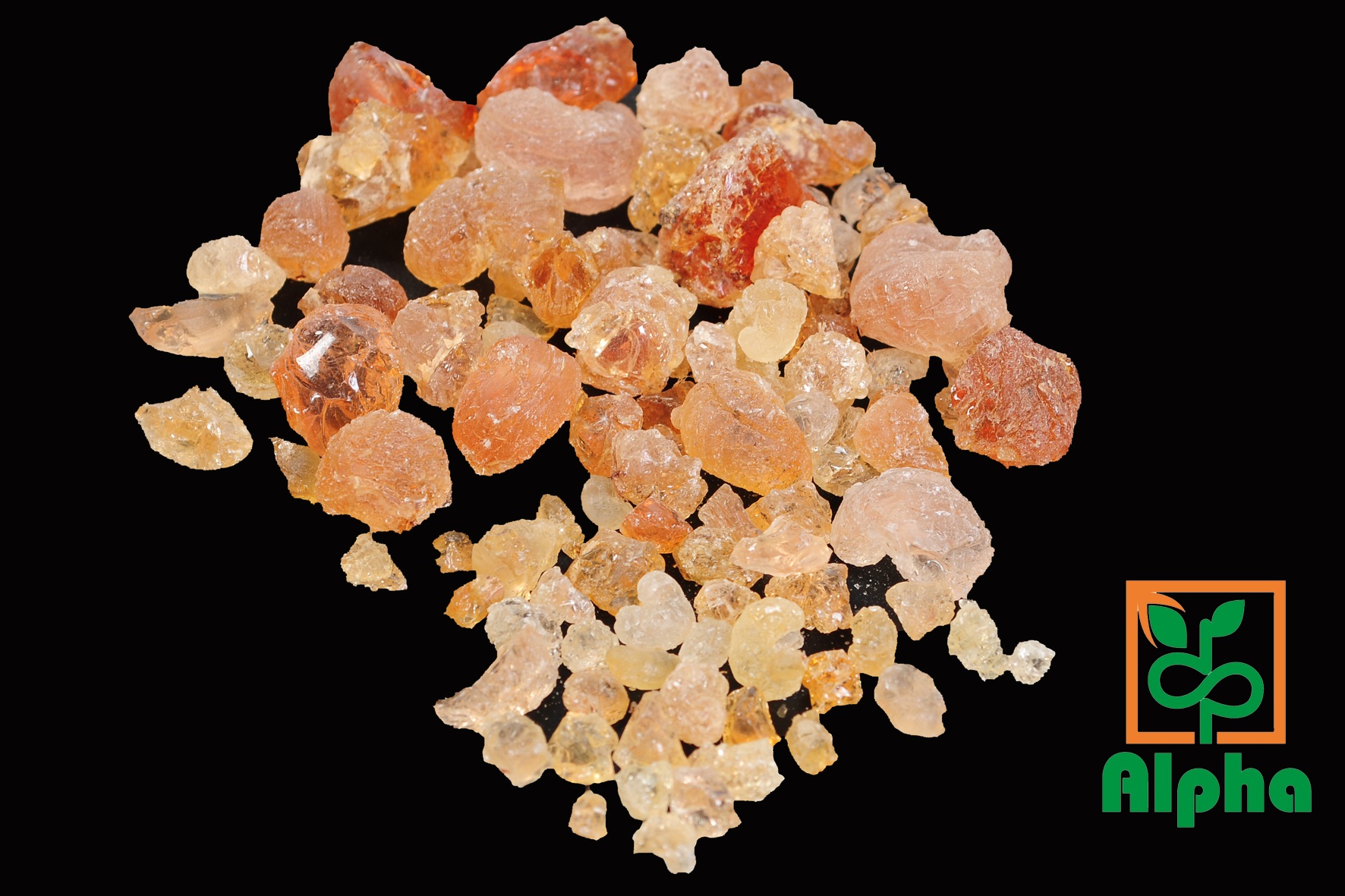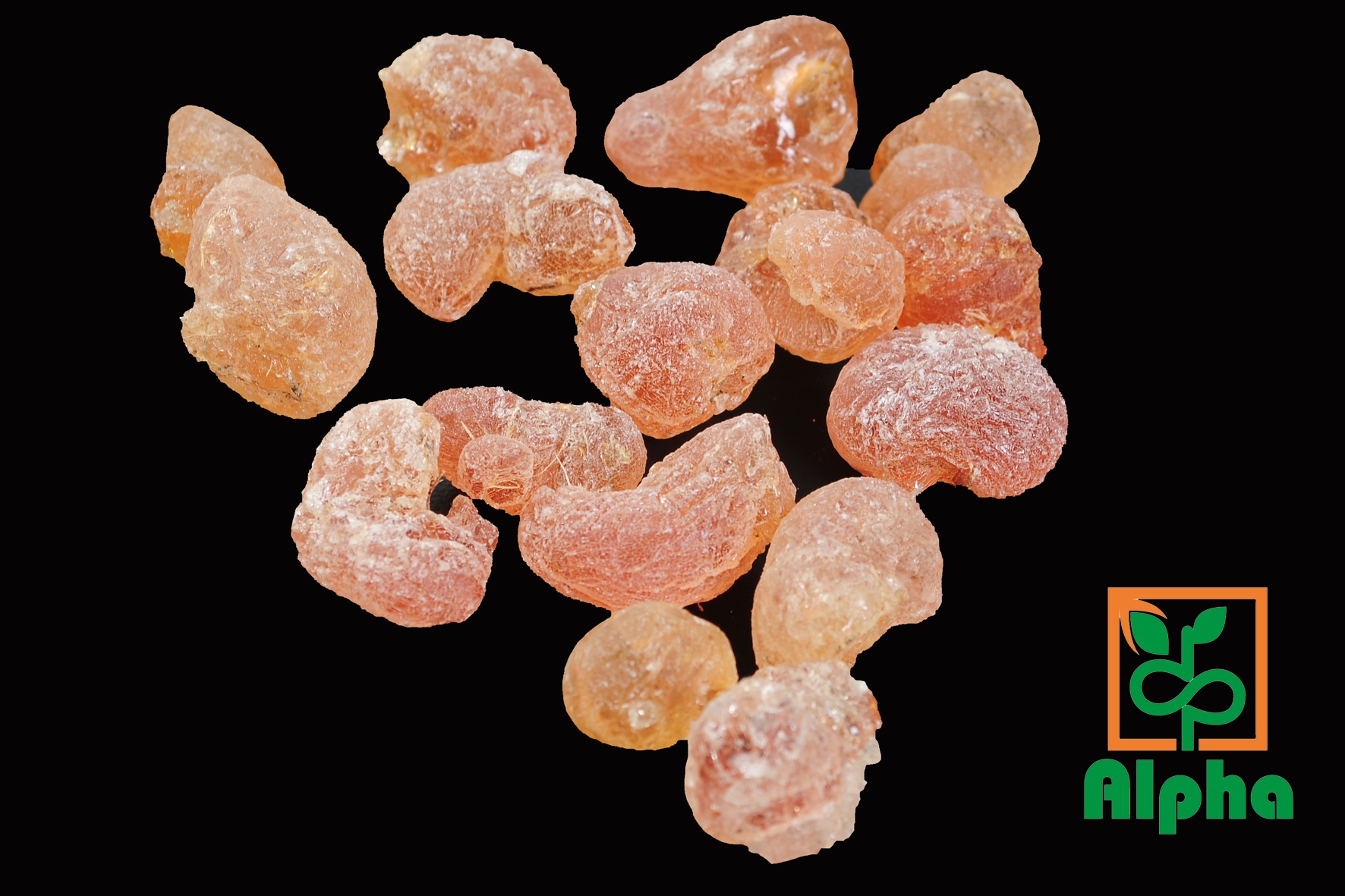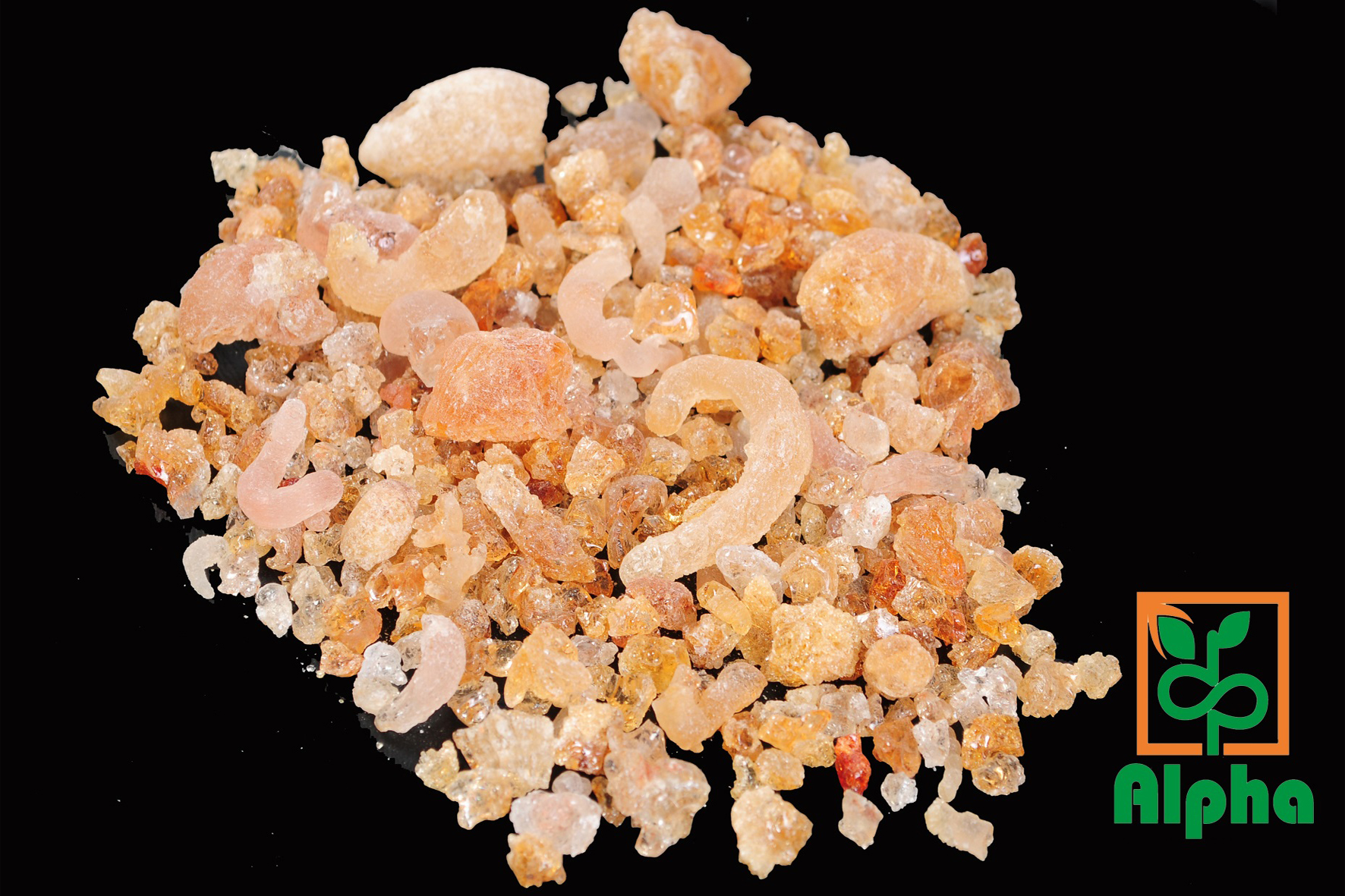Gum arabic, also known as acacia gum, chaar gund, char goond, or meska, is a natural gum made of hardened sap taken from two species of the acacia tree; Senegalia (Acacia) senegal and Vachellia (Acacia) seyal. The gum is harvested commercially from wild trees throughout the Sahel from Senegal to Somalia, although it has been historically cultivated in Arabia and West Asia.(wikipedia)
Gum arabic is a complex mixture of glycoproteins and polysaccharides. It was historically the source of the sugars arabinose and ribose, both of which were first discovered and isolated from it, and are named after it.
Gum arabic from the Sudan is a product of Acacia senegal and A. seyal species. Acacia senegal var. senegal is the only variety which grows in the Sudan and is the main source of commercial gum arabic (hashab).Acacia senegal known as gum hashab.
Sudan commands over 80% of the world’s gum arabic production and trade. Both species spread naturally in the central belt of the low rainfall savannah where they exist in pure or mixed stands, in the clay plains in the East and sandy soils in the West.
Besides its significant economic role for the country, gum arabic plays an important part in rural life, providing a steady income to rural families especially in dry years when crops fail.
Types and grades of Gum:
Gum Arabic Hashab(Acacia Senegal):
Gum Arabic Hashab is known for its many uses in food items such as gelatos and soft drinks, marshmallows and other candies. It is also used in the food industry as a stabilizer. It is also an important ingredient in Lithography, printing, production of paint, production of glue and ink and even in the beauty industry to make some cosmetics.
Specifications:
| Color: | Pale white to yellowish- orange |
| Solubility: | highly soluble in water, give up to 50% |
| Moisture: | less than 15% |
| Total ash: | less than 4% |
| Viscosity: | 70 110 mpsc |
| PROTEIN: | 0.7-1.0% |
| NITROGEN: | 0.106 - 0.156% |
| Acid Insoluble Residue: | 0.35% max |
Grade 1 : Hashab (acacia Senegal): is sorted to the following grades:
- Hand Picked Selected (HPS): The most expensive grade. Cleanest, lightest color and in the form of large nodules.
- Cleaned and Siftings: The material that remains after handpicked selected and siftings are removed. Comprises whole or broken lumps varying in color from pale to dark amber.
- Cleaned: The standard grade varying from light to dark amber. Contains siftings but dust removed.
- Siftings: Fine particles remaining following sorting of the choicer grades. Contains some sand, bark and dirt.Dust: Very fine particles collected after the cleaning process. Contains sand and dirt.
- Red: Dark red particles
Gum Arabic Talha(Acacia Seyal):
Gum Arabic Talha is a yellowish- brown substance in solid form. When dry, its nodules are brittle and can easily break into siftings and dust. It is odorless and has a stringent taste. It is a water soluble gum derived from a number of Acacia trees and is considered a major source of technological grade gums.
Specifications:
| Color: | varies from white to red/brown |
| Solubility: | 98% water soluble |
| Moisture: | less than 15% |
| Total ash: | less than 4% |
| Viscosity: | 70 110 mpsc |
| PROTEIN: | 0.7-1.0% |
| NITROGEN: | 0.106 - 0.156% |
| Acid Insoluble Residue: | 0.35% max |
Grade 2 : Talha (acacia seyal): is sorted to the following grades:
- Talha cleaned – size (4mm and above)
- Talha sifting grade – size (0.5mm ~ 4mm)
- Talha dust grade – size (under 0.5mm)
Uses:
- Printing.
- Paint production.
- Glue.
- Soft drinks (Coca-Cola, Pepsi)
- Medical industry (Capsules shells)
- Cosmetics and various industrial applications, such as viscosity control in inks and textile industries, and more a lot where this is not the place to give the details of uses.




 1
1 2
2 3
3 5
5


